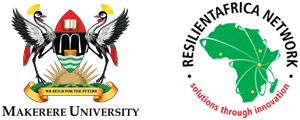The Horn of Africa RILab (HoA RILab) is one of ResilientAfrica Network’s (RAN) Resilience Innovation Labs (RILabs). HoA RILab is hosted by Jimma University, College of Public Health and Medical Sciences in Ethiopia, with three network-plus partners. Two of the network-plus partners are within Ethiopia; these are Addis Ababa University, located in the central part of Ethiopia, and Bule Hora University found in Southern Ethiopia, close to the RAN project area. The other network-plus partner is Benadir University, located in Mogadishu, Somalia.
HoA RILab Vision
Horn of Africa RILab envisions having African communities which are resilient to various shocks and stresses, such as droughts, food insecurity, conflicts, chronic displacements, etc through mobilizing partners and stakeholders as well as utilizing innovative solutions to achieve inclusive and sustainable development.
Thematic Areas of Focus
RAN’s Horn of Africa RILab concentrates on two interrelated thematic areas:
- Resilience to the effects of recurrent drought on livelihoods of pastoralist communities.
- Resilience to the effects of Internal Displacement due to chronic conflict.
In Ethiopia, livelihoods of most people are dependent on farming or pastoralism. Pastoralism, a livelihood that is based on livestock production, and which is often found in lower rainfall areas, is characterized by long and short distance migration searching for pasture lands and water. The scarcity of such resources poses natural threats to their livelihood systems due to the concomitant hostile competition, anthropogenic conflicts and instability, and these adversely affect their wealth, infrastructure, social services, psychosocial conditions, human capital, and ultimately aggravate their environmental conditions, creating a vicious cycle of poverty.
In general, poor infrastructure development and limited connectivity; low institutional and human capacities in supporting relief and development projects; logistical and governance shortfalls; dependency on scanty rainfalls and mono livelihoods; environmental degradation; cultural values and mindset which hinder rational livestock production and diversified livelihood; recurrent droughts followed by shortage of water and pasture; violent inter-clan and external conflicts; and high population growth have all contributed to the increasing poverty among the Borana pastoralists.
Such resilience challenges have been aggravated by environmental conditions such as deforestation, overgrazing, bush encroachment, charcoal production, invasive plants, and destruction of water sources.
Somalia’s economy is agro-based with livestock surpassing crop farming, in value accounting for 40% of GDP. In Somalia, similar resilience challenges have prevailed. Incited by environmental variability and chronic conflicts, Somalia in general and Benadir Region in particular, have suffered chronic displacements for decades. According to USAID Report (2013), Somalia had approximately 1.1 million Internally Displaced Persons (IDPs), most of them concentrating in Benadir Region.
The main shocks and stresses resulting from Internal Displacements in Benadir Region include; intensification of conflicts, food insecurity and chronic malnutrition, asset depletion, psychosocial instability, unemployment, increasing poverty and deteriorating human capital.
Geographic Coverage
The HoA RILab has identified two target communities which spread in two countries. These include:
Ethiopia
Somalia
Dimensions of Resilience
- Ethiopia: Wealth, Livestock, Environment, Infrastructure and social service, Community network/Social capital, Governance, peace and Security, Psychosocial and Human Capital.
- Somalia: Natural Resources /Environment, Governance, Wealth, Security, Protection and Advocacy, Human Capital, Psychosocial Health, Social Capital/Community Networks Dimension, Infrastructure and Health.


